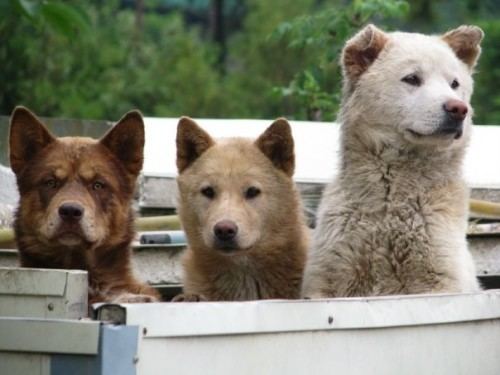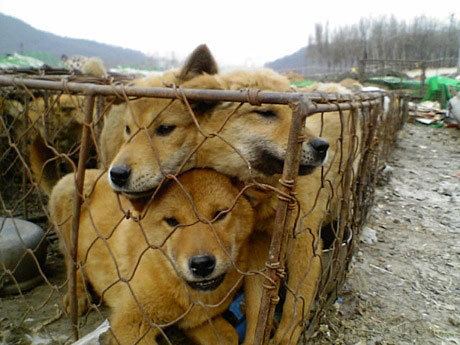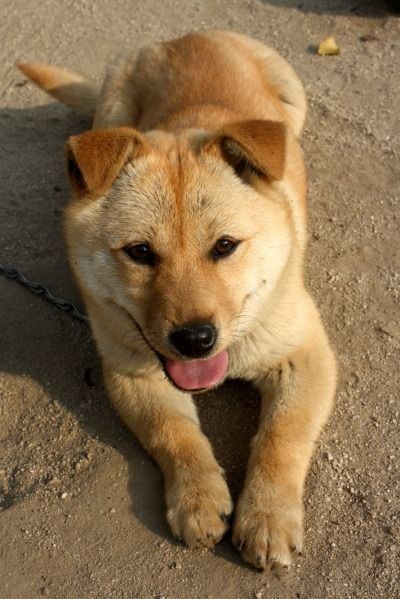Color yellow Rank Breed | Scientific name Canis lupus familiaris Higher classification Dog | |
Similar Pungsan dog, Korean Jindo, Indian Spitz, Seskar Seal Dog, Tahltan Bear Dog | ||
The Nureongi (also spelled Noo-rung-yee) or Korean edible dog is a landrace dog native to Korea. Like native Korean dogs such as the Jindo, nureongis are medium-sized spitz, but with greater musculature and distinctive coat patterns. They are generally uniform in appearance, with short yellow hair and melanistic masks although some diverge. Nureongis are most often used as a livestock dog, raised for their meat, and not commonly kept as pets.
Contents

57 Dogs Rescued from South Korea Dog Meat Farm
Population estimate

In a 2009 study about dog meat consumption in South Korea, Anthony Podberscek of Cambridge University reported that, although other kinds of dogs are also farmed and eaten, the nureongi is the dog most commonly used in this way. In 1998, there were a total of 2,246,357 dogs in Korea but only 882,482 households with pet dogs. As most Korean pet owners do not have more than one dog, the "unique" Korean livestock dog must have outnumbered all other kinds of dogs that lived in Korea in that year. The Korea Observer reported in 2015 that many different breeds of dog are eaten in South Korea, including pet breeds such as labradors, retrievers and cocker spaniels, and that the dogs slaughtered for their meat often include former pets.
Habitat

Nureongi are often raised on crowded Korean dog meat farms of unclear legality, being kept on short chains or small cages with very little room to move. However, some are kept in the yards of houses, where they function as guard dogs until they are sold or slaughtered and eaten. In 2002, an estimated 765,000 or more dog farming facilities exist within South Korea. Despite often being housed within raised cages designed to allow drainage of excrement and waste, the housing is often filthy and frequently provides little protection from elements, causing the animals to die from heat exhaustion or to succumb to extreme cold. They are transported by truck to market in cages which are often so crowded that the dogs can move very little; this sometimes results in injuries such as broken spines, strangulation, or death.
Terminology

Nureongi, is the transliteration of the Korean word "누렁이" meaning "yellow one" used colloquially somewhat as the American term "Yeller" as it is used as a name for any yellow animal in English. A common Korean slang term is dong-gae (똥개), meaning "dung dogs" or "shit dogs," which refers to the common belief that the dogs have a habit of eating feces or being fed human feces.
English zoologist and ethologist Desmond Morris also noted the animal being referred to as the "Korean edible dog."
